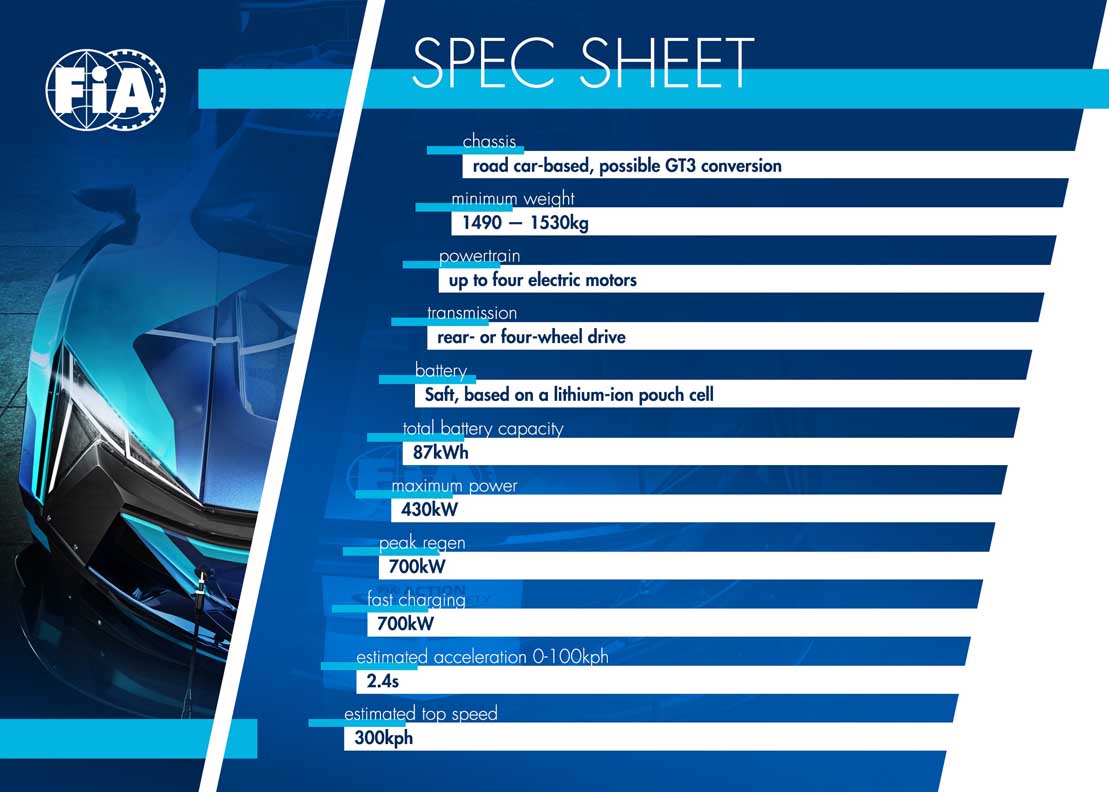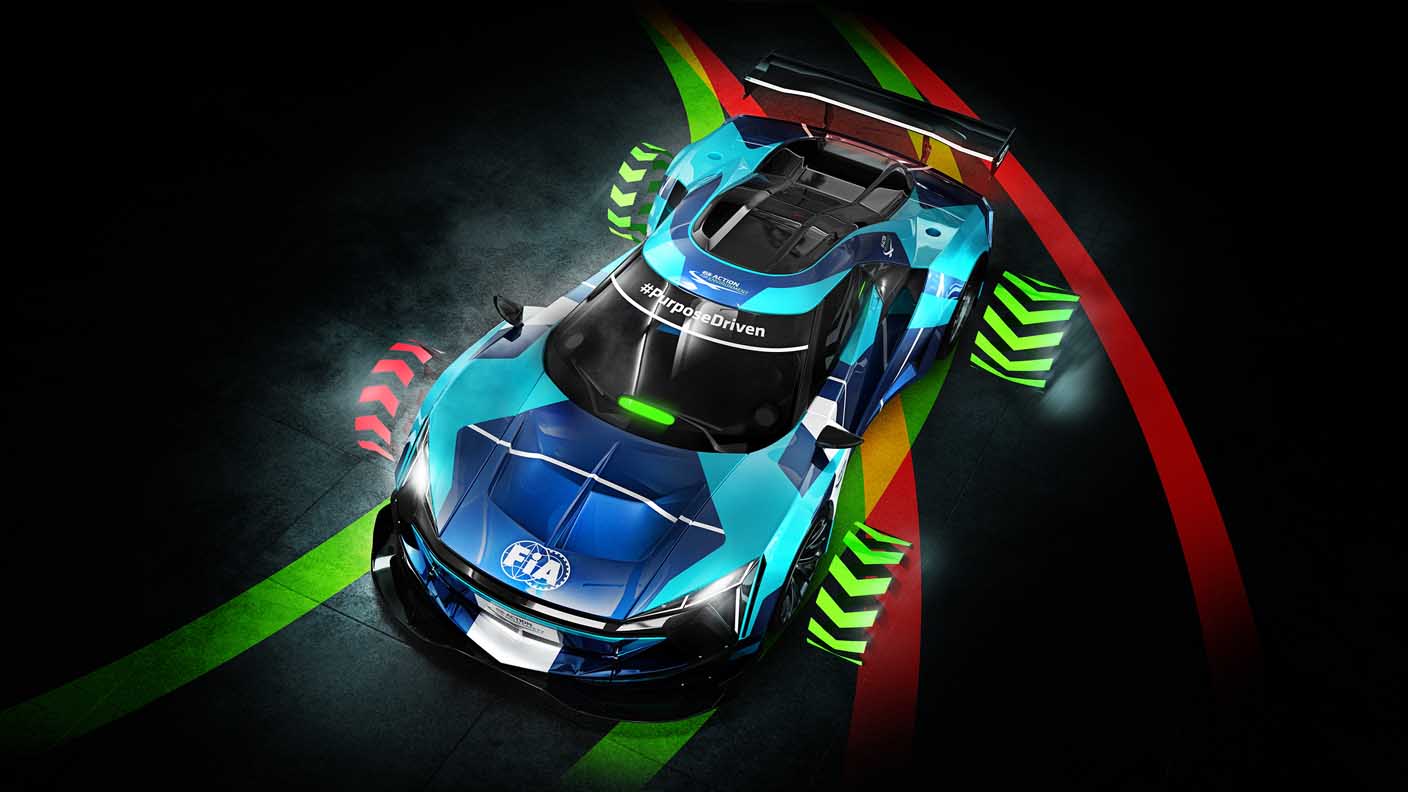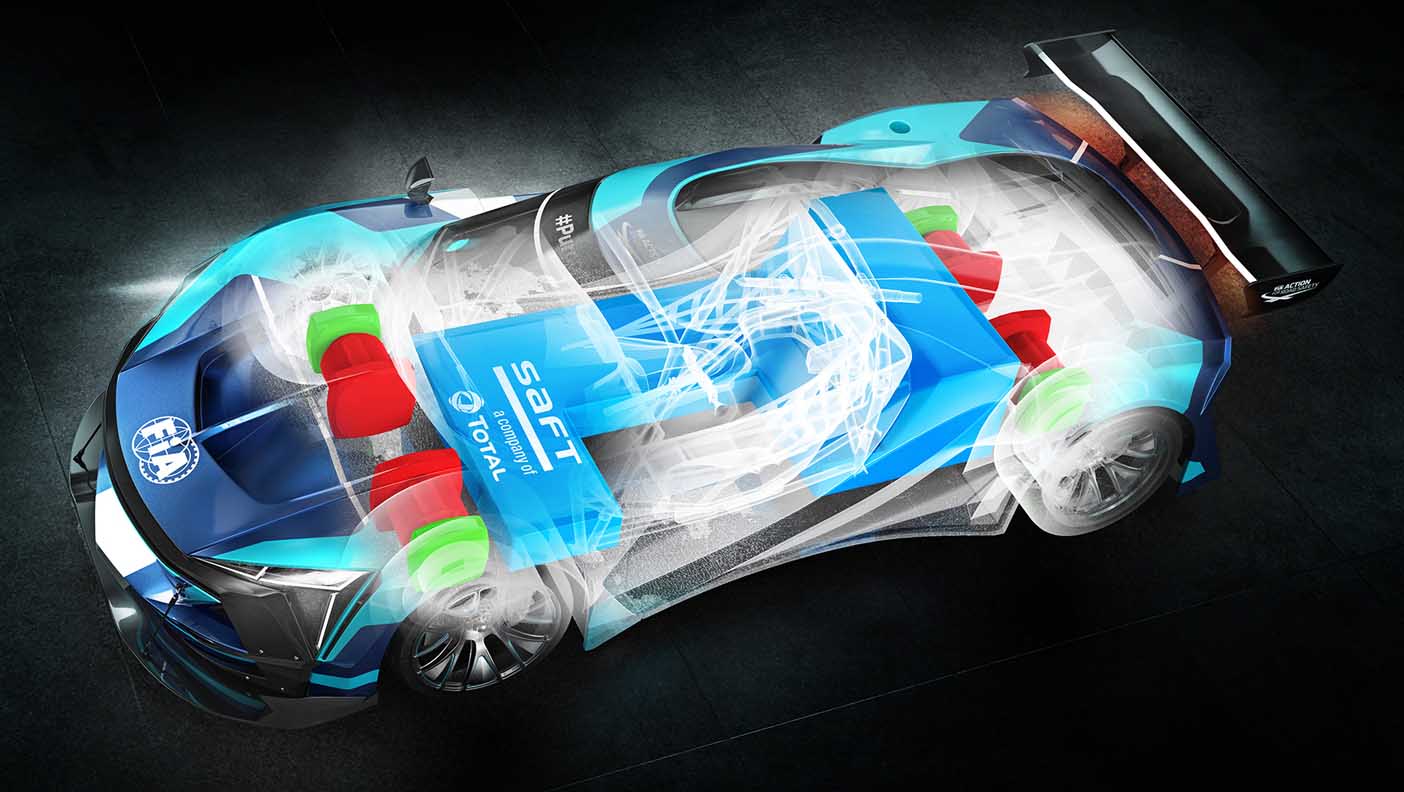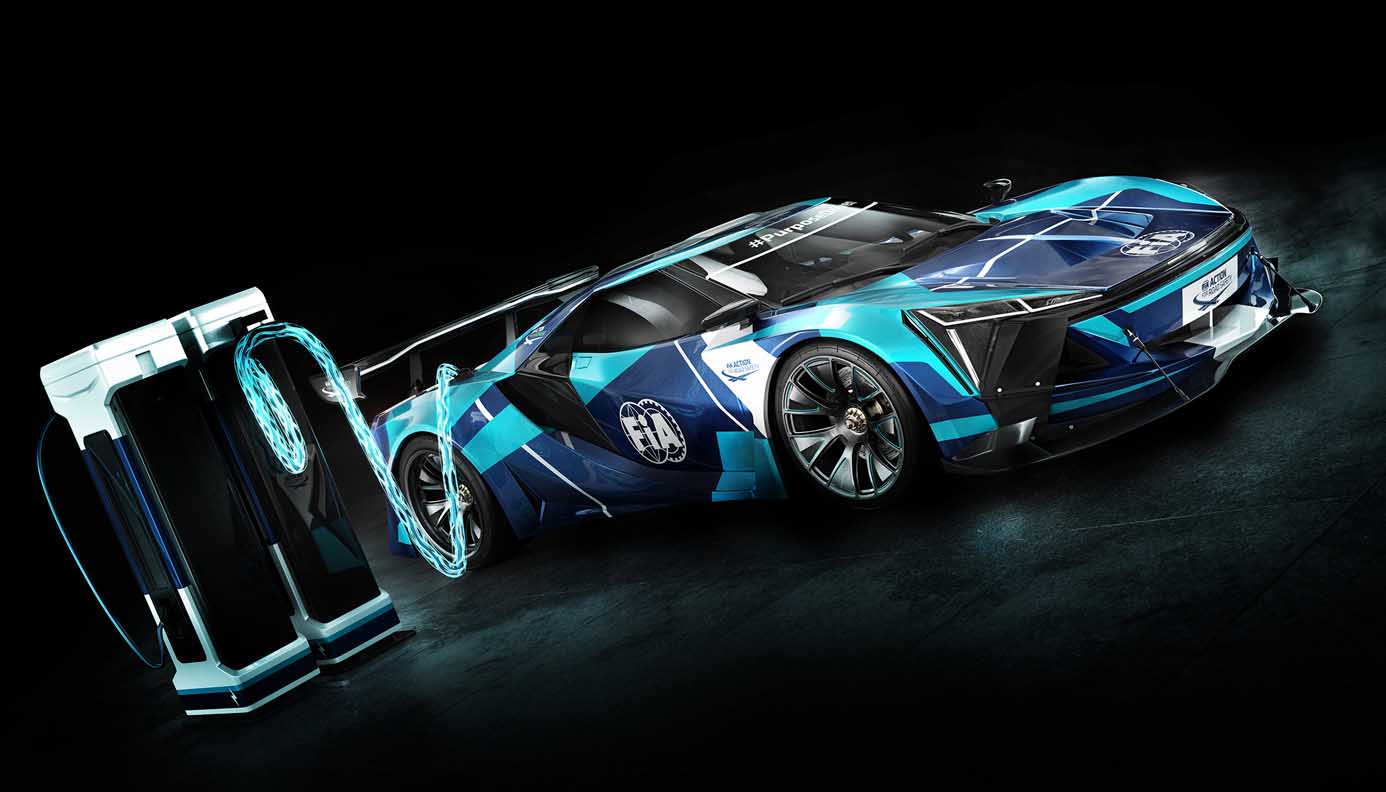
This pioneering concept embodies a unique combination of innovations unseen in motor sport to date and is intended to serve manufacturers as a platform to develop technology relevant to their high-performance road cars.
The cars built to this set of technical regulations will compete at full-length permanent circuits and will set new standards for electric vehicles in motor sport in terms of performance and range.
This innovative breed of cars will operate in a similar performance window to the current generation of GT3 cars but will exceed their combustion engine-powered counterparts in areas such as acceleration and qualifying pace.
CUTTING EDGE TECHNOLOGY AND COST CONTROL
The new class is based on direct manufacturer involvement, with the technical regulations prepared to achieve the right balance between permitting the OEMs to express themselves in terms of creativity and developing cutting-edge technology, while at the same time preventing cost escalation.
The category will be opened open to both specialists in electric vehicle construction without previous combustion engine motor sport experience as well as manufacturers already committed to the GT3 class, who will be able to utilise the architecture and certain design elements of their existing cars and convert them to electric power.
Depending on the base model, the minimum weight of the cars will vary from 1490 to 1530kg, with maximum power reaching 430kW. Setting the weight threshold higher than it is for the GT3 class will limit the use of expensive materials.
PARTNERSHIP WITH INDUSTRY-LEADING BATTERY FIRM TO ENABLE FAST CHARGING
The new class will be the first in electric-powered motor sport not to rely on standarised batteries. It will accommodate cars of vastly different architectures with different spaces available to install key components.
Through partnership with industry-leading firm Saft, a subsidiary of Total, the category will allow the manufacturers to build their own bespoke battery layouts based on Saft-supplied cells. Relying on Saft’s 100 years of experience in areas such as aeronautics, space programmes, defence and motor sport, Saft has developed bespoke lithium-ion pouch cells optimised for the needs of the new class.
The cells were designed to allow for 700kW peak regen and 700kW fast recharging that will enable them to replenish to 60% of their capacity within a few minutes during a mid-race pit stop. The charging network will be developed to meet the fast charging requirements and depending on the venue, will include elements of permanent and temporary infrastructure.
ROAD RELEVANCE
In addition to fast charging, the category will feature several other innovations relevant from a technology transfer standpoint.
All of the manufacturers will have the freedom of choosing their own powertrain set-ups, comprised of either two or four electric motors, with both two- and four-wheel-drive configurations allowed.
The cars will also feature dynamic vehicle control that will automatically adjust the torque of each wheel independently based on speed, acceleration, traction and steering angle, thus ensuring that the cars will have supreme handling characteristics.
SUSTAINABLE LONG-TERM VISION
The introduction of this new concept is in line with the FIA’s long-term vision for the implementation of sustainable energy sources across its portfolio of motor sport disciplines, thus setting an example in the approach to the reduction of CO₂ emission, while at the same time reflecting the latest trends in the automotive industry and responding to the demands of the market.
The promoter of a new world-level competition built around the concept of electric-powered GT cars will be announced in due course.
Jean Todt, FIA President, said: “The FIA’s vision is to make motor sport a laboratory for sustainable mobility. The announcement of this new electric-powered GT car category is a key milestone serving this goal as it will pave the way for new battery and fast-charging technologies. A perfect illustration of our race-to-road approach.”
Leena Gade, FIA GT Commission President, said: “The market for high-performance electric road supercars is on a constant rise, hence a platform to allow manufacturers to develop and showcase their technology was much needed. Creating these technical regulations has been a key project for the FIA GT Commission over the last eighteen months. We’ve held regular discussions with GT manufacturers through our Technical Working Groups and there’s keen interest in this new category. It also widens the FIA’s GT portfolio, coexisting alongside with GT3 which will remain the focus of the customer racing market worldwide for the time being.”
Xavier Mestelan Pinon, FIA Technical Director, said: “The role of electric propulsion in automotive industry is ever-increasing, as we want motor sport to be relevant to our industry, more and more competitions are going in this direction. The main technical challenges are battery development, battery integration in the cars and fast charging technology. This is crucial to the manufacturers who want to develop road-relevant technology rather than relying on standard components. Also, being able to utilise and adapt GT3 platform ensures that costs are under control.”




